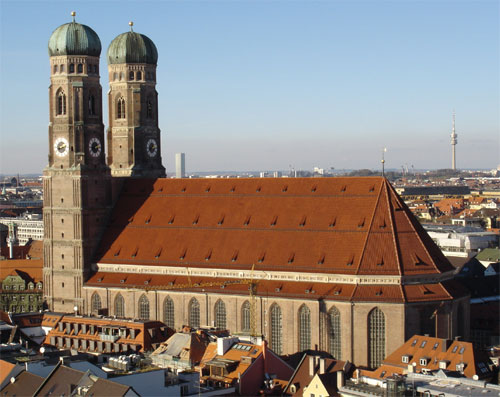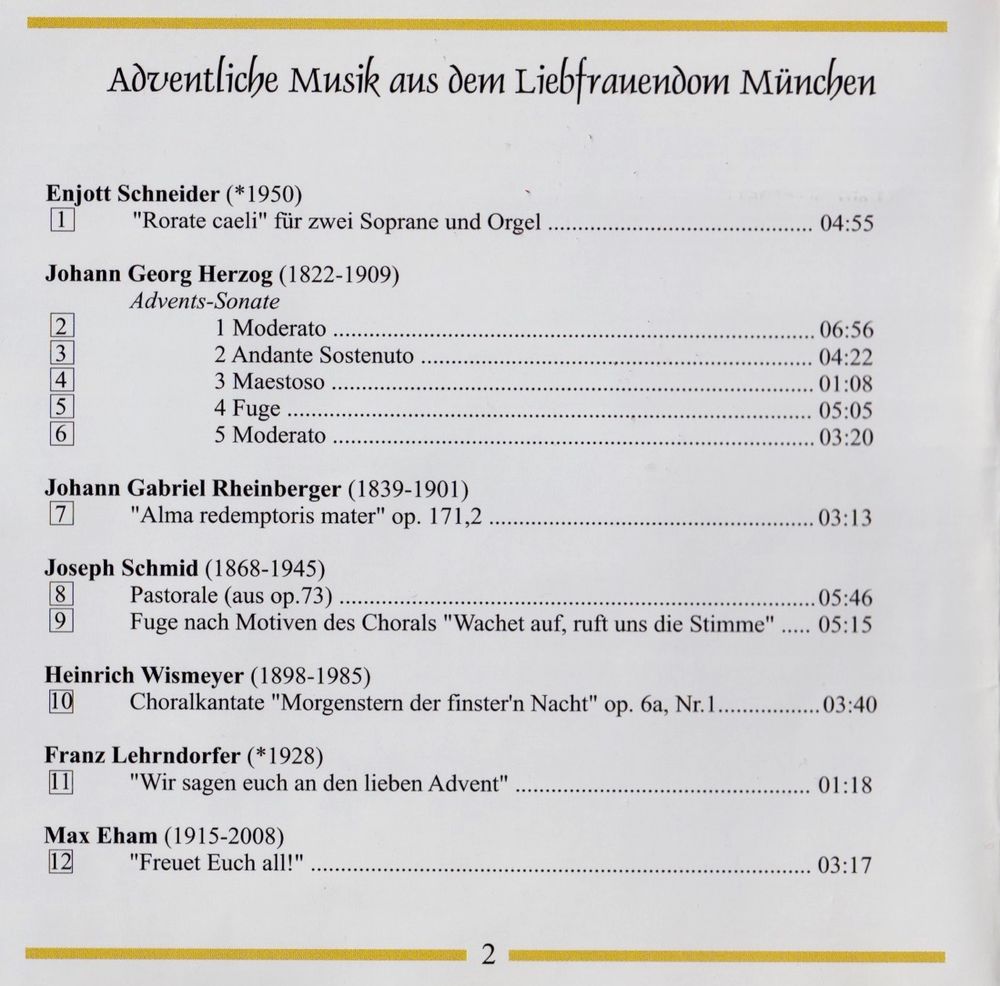
Category: Recordings
ADVENT – rather different from the bright fanfare of Christmas celebrations – is a magical and mysterious time that extends over several weeks: its focus is on anticipation. Advent is associated with hope in dark and secret places, humility, quiet and human companionship – without the commercial distractions of materialism and shopping for presents. Seldom do people come so close to ‘religion’ (in the sense of religion with its links to ancient traditions) as in this inward-looking time.
Movements: 1: VENI REDEMPTOR GENTIUM
2: LICHT – MITTEN IM KALTEN WINTER
3: NUN KOMM DER HEIDEN HEILAND
4: TOCCATA SOPRA „RORATE CAELI DESUPER“
Warmly dedicated to cathedral organist and minister Hans Leitner (Munich)
Duration: 22 minutes
Composed for organ with at least three manuals
ADVENT – rather different from the bright fanfare of Christmas celebrations – is a magical and mysterious time that extends over several weeks: its focus is on anticipation. Advent is associated with hope in dark and secret places, humility, quiet and human companionship – without the commercial distractions of materialism and shopping for presents. Seldom do people come so close to ‘religion’ (in the sense of religion with its links to ancient traditions) as in this inward-looking time. Organ Symphony No. 11 expresses this in four movements:
1.VENI REDEMPTOR GENTIUM: This hymn by Ambrosius of Milan (c. 339 – 397) is probably the oldest Christmas hymns in Christendom and a poignant evocation of Christ’s coming, heartfelt in its simplicity. The organ brings sounds out of the darkness, intensifying them to announce the greatness of the coming power – which first appears, however, as an inconspicuous little ‘light’.
2. LIGHT - AMID THE COLD, COLD WINTER: Here is the call of the prophet Isiah, speaking of light and hope in the middle of the coldest season: ‘For behold, the darkness shall cover the earth, and deep darkness the people; but the Lord will arise over you, and his glory will be seen upon you’ (Isiah 60,2). A mystical vision incorporates unstructured melodies and puzzling harmonies in an attempt to grasp the incomprehensible truth that is to come.
3. NUN KOMM DER HEIDEN HEILAND (Come, Saviour of the gentiles): this movement is soft and inconspicuous and yet, in a way ‘that amazes all the world’, full of technical tricks (canons, additive rhythms and subtracting beats in syncopation) held together by the pedal theme of Martin Luther’s fascinating chorale – a direct transcription of the Ambrosian hymn of 1524.
4. TOCCATA SOPRA „RORATE CAELI DESUPER“: a small yet powerful toccata is heard over the bright melodies of a Responsorium dating from 17th Century France. With driving, playful rhythms it expresses childlike excitement in looking forward to Christmas.
Records: Motette CD MOT 50901 LC 05095, 2012
Performers on recording: Cathedral organist Hans Leitner and the Munich Dommusik, cond. Lucia Hilz















